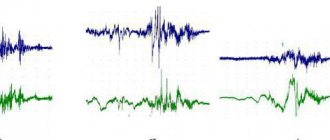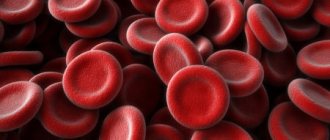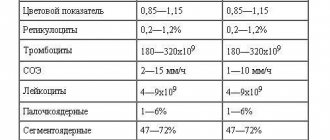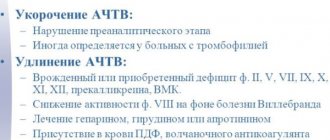0
Author of the article: Marina Dmitrievna
2017.08.10
2 362
Blood analysis
ESR is one of the indicators of a general blood test (CBC). Indicates the sedimentation rate of erythrocytes - the red elements of blood. When an infection enters the body, or some pathological process begins, the red blood cells begin to actively connect with each other.
Red blood cells
The rate of their sedimentation can say a lot, so it is appropriate to check this indicator at the slightest deterioration in health. Sometimes it can detect the disease even before characteristic symptoms appear. ESR is usually calculated using the Panchenkov method. To do this, use a special capillary with a scale.
Why might ESR increase?
Calculation of erythrocyte sedimentation rate is one of the basic elements of the primary diagnosis of any disease. The OAC helps doctors make a diagnosis, see the effectiveness of the prescribed treatment, and predict the prognosis of the disease. This figure is increasing for various reasons.
The main “provocateurs” of increased ESR:
- Infectious diseases. The entry of pathogenic microorganisms into the body causes many reactions in the blood, since at this moment the fight between antibodies and foreign cells begins. The ESR indicator is capable of identifying both obvious and latent infections.
- Autoimmune diseases. In this case, increased ESR develops due to oversaturation with immune complexes. This condition develops with arthritis, vasculitis, lupus erythematosus, etc.
- The appearance of neoplasms. The oncological process in the body can increase the ESR to 40 mm/hour. In parallel with ESR, other blood components also change in percentage terms.
- Inflammatory processes. When inflammation begins in the body, the blood changes its composition. Cell destruction leads to increased ESR.
- Purulent diseases and necrosis. The process of tissue breakdown is accompanied by an increased erythrocyte sedimentation rate, so in case of severe injuries, burns or in the postoperative period, doctors recommend taking a general blood test.
There are several other factors that can influence increased erythrocyte sedimentation:
- pregnancy (due to changes in the amount of protein in the blood, this indicator increases to 20-40 mm/hour);
- morning hours - ESR is higher immediately after waking up;
- taking oral contraceptives (birth control pills can increase ESR in women while taking the pills);
- increased blood viscosity;
- In women, the indicator is normally 1-2 units higher than in men.
These are natural features that do not require treatment. Stopping taking contraceptives and changing the hours of blood donation can return the indicator to normal.
What is ESR?
ESR stands for erythrocyte sedimentation rate (red blood cells). It depends on the ratio of protein fractions and the number of red blood cells.
This is an important nonspecific laboratory indicator of blood quality. By its change one can judge the presence of a current inflammatory process.
When an infection occurs in the body, the concentration of protein mass in the blood increases. Proteins affect blood clotting by gluing red blood cells into long chains.
The total weight of blood cells increases, which affects the rate of their deposition (it becomes higher). This parameter is used to determine the presence or absence of pathologies in the body.
ESR increases already 24 hours after a person is infected with the virus. Further, there is a positive dynamics of increasing speed, which reaches its greatest value on days 7-10. Sometimes the peak of the indicator is recorded during the patient’s recovery period.
By taking a single measurement of ESR, it is impossible to track the development of the disease. Therefore, the analysis is done several times over a certain period. The red cell sedimentation rate test is not the main diagnostic tool. Only on its basis, in isolation from other data, a conclusion about the patient’s condition is not made.
How is the procedure done?
The determination of ESR according to Panchenkov is designed to use the patient’s capillary blood for analysis. It is taken from the finger. Next, a special capillary is used, which looks more like a long pipette. The capillary has a precise scale with millimeter divisions - from 0 to 100 mm.
There are also two letters marked on this capillary pipette: “K” and “P”. At the 100 mm mark is the letter “K” (blood), and at the 50 mm mark is the letter “P” (reagent). There is one important requirement for the ESR meter - it must always stand vertically.
ESR according to Panchenkov is increased - what does this mean?
Tilting the glass pipette will distort the result. This method is based on the use of a reagent - sodium citrate 5%.
Algorithm for calculating ESR using the Panchenkov method:
- The glass capillary is filled with sodium citrate to the 50 mm mark.
- The measured volume is poured into a test tube.
- Blood is taken in two steps so that the volume fills the capillary to 100 mm.
- The taken material is mixed with the contents of the test tube.
- The blood is combined with the reagent and actively mixed.
- The finished composition is drawn into a capillary up to 100 mm.
- The prepared capillary is placed in a stand so that it acquires a vertical position.
- Make a mark where the capillary tube was installed.
- After 60 minutes, the erythrocyte sedimentation rate is calculated.
- The finished result is entered into the analysis form.
Often, a laboratory report can be obtained on the same day that the blood was drawn. If the laboratory form contains the terms ROE or ESR, then they mean the same erythrocyte sedimentation rate. The result is calculated in mm/hour.
Methodology for researching health status
In medicine, there are a large variety of methods for studying health status, and at the same time, more and more new diagnostic techniques are constantly being introduced.
An often studied indicator to determine the presence of pathological changes, diseases and inflammations, both in adults and in the youngest patients, is the level of ESR in the blood. Various methods are used to study it.
The most common of all is the definition of ESR according to Panchenkov. We will tell you more about the technique in this article.
What is the ESR indicator?
ESR is a medical abbreviation that means the rate of erythrocyte sedimentation in the blood; the concept of ROE is less common, which means the same thing - the erythrocyte sedimentation reaction.
During a laboratory test, red blood cells, also known as erythrocytes, under the influence of reagents, settle at the bottom of the test tube over a certain period of time. Thus, the blood is divided into 2 layers: the transparent layer is the blood plasma, and the lower layer of deposited red blood cells. The indicator is measured in mm/hour.
Too rapid subsidence and a high rate may indicate a current disease or infection, however, this is not indicative in all cases and may be due to other, natural reasons. Only a doctor can help you decipher the analysis; additional research may be needed.
Existing methods for determining ESR
In clinical diagnostic laboratories, the following methods are used to determine the ESR indicator:
- determination of ESR by T. P. Panchenkov’s method;
- Westergen method;
- Wintrobe system;
- measurement of sedimentation by kinetic observation methods.
Each method differs in its technique and associated accessories. In our country, ESR is most often analyzed according to Panchenkov.
What is the principle of this method?
Sodium citrate is used as an anticoagulant reagent, which is added to capillary blood in a ratio of 4:1. The blood settles in a vertical position in a glass capillary, which has 100 divisions, of which there are special divisions to simplify the study, for example, the boundary of the reagent (P) and blood (K). The result is assessed and recorded after 60 minutes.
So, in order to determine ESR according to Panchekov, the laboratory assistant needs to carry out the following actions:
- prepare a 5% solution of sodium citrate, add it to a 50 mm test tube;
- wash the capillary;
- perform capillary blood sampling from a person;
- mix blood with sodium citrate and fill the capillary with the required amount;
- place it on a special tripod;
- turn on the timer;
- after 60 minutes, determine the ESR level by the number of millimeters of settled plasma.
Soe according to Panchenkov norm and deviations
The final coefficients when analyzing to determine ESR using the Panchenkov or Westergren method will be the same if the indicators are closer to normal. The greater the upward deviation from the norm, the greater the values produced by the Westergren method. Comparative table of indicators for two methods:
| According to Panchenkov | According to Westergren |
| 15 | 14 |
| 16 | 17 |
| 20 | 22 |
| 30 | 35 |
| 40 | 50 |
| 50 | 65 |
| 60 | 80 |
| 70 | 100 |
Regardless of the chosen method, in order to correctly interpret the result of a blood test, you need to take into account some factors, including physiological ones, that affect the erythrocyte sedimentation rate:
- men have a lower ESR than women;
- sometimes, ESR according to Panchenkov is increased when a woman is pregnant or taking hormonal contraceptives;
- in the morning the indicator is slightly elevated in all people;
- In people suffering from anemia, erythrocyte sedimentation is accelerated.
If you think that the result of the studied ESR according to Panchenkov is elevated, to clarify, you can try to donate blood in another laboratory.
Source: https://vseproanalizy.ru/soe-po-panchenkovu.html
What preparation should there be?
Panchenkov's erythrocyte sedimentation rate is a blood test that requires little preparation on the part of the patient. To ensure true and accurate results, you should follow these recommendations:
- donate blood on an empty stomach (the last meal should be 12 hours before the procedure),
- 2 days before donating blood, avoid fatty, fried and spicy foods,
- the day before blood sampling, cancel training, physical activity, weight lifting,
- be less nervous
- Before the analysis, warn the doctor about taking medications (the drug Cortisone, oral contraceptives, Cyclophosphamide can affect the results).
If it is not possible to stop the medications for a while, the doctor should suggest changing the medications.
How to prepare for analysis
The technique for setting ESR requires preparation. 2-3 days before collecting biomaterial for research, it is advisable to follow the following recommendations:
- Eliminate spicy, fatty, fried foods from the menu.
- Do not drink alcohol.
- The time interval between donating blood and eating is at least 10 hours.
- Neglect physical activity.
- Stop taking analgesics and salicylates.
It is better to collect material in the morning, on an empty stomach.
Taking some medications distorts the reliability of the results.
Preparation rules are also mandatory for children.
It is not recommended to change the time and place of testing for repeated studies.
Carrying out the procedure
To determine ESR according to Panchenkov, the following procedure is used:
- The pad of the ring finger, having been pre-treated, is not deeply and quickly pierced. The instrumentation is opened immediately before the procedure for collecting biomaterial.
- The drop that appears on the surface is removed. Subsequent drops fill the capillary pre-treated with the reagent to the upper level.
- The collected material is placed in a sterile tube with a solution of sodium citrate. Shake, then refill the tube. Place it on a tripod and turn on the timer.
Important information: What do low platelets in the blood indicate during pregnancy (increasing foods)
The procedure for determining ESR is the primary procedure for performing a general blood test.
Blood test according to Panchenkov: the norm for children and adults
When ESR according to Panchenkov is elevated in women, this may not always be a cause for concern. Pregnant women may have an ESR of up to 45 mm/hour. In all other cases, the norm for women under 30 years of age is 8 – 15 mm/hour, after 30 years of age – up to 20 mm/hour.
For men under 60 years old – 2-10 mm/h, after 60 – up to 15 mm/h.
Panchenkov scale
In children, high ESR levels can indicate various pathologies, but the age of the child must be taken into account. Due to active growth in children, ESR standards often change:
- newborn children – 2-2.8,
- up to 4 weeks – 2-5,
- from 2 to 6 months – 4-6,
- 6 months-1 year – 3-10,
- 1-5 years -5-11,
- 6-14 years – 4-12,
- girls over 14 years old – 2-15 mm/hour, boys over 14 years old – 1-10 mm/hour.
In a child, changes in blood counts largely depend on his growth and the rate of formation of the body. In adolescent children, indicators approach the norms of adults. All methods used to determine ESR must take into account the age and gender of the patients.
In addition to infectious diseases, a child with elevated ESR levels may be diagnosed with:
- diseases of the circulatory system;
- injuries;
- diseases associated with tissue destruction;
- metabolic failures;
- autoimmune diseases.
Sometimes, due to poor nutrition of the mother, ESR is increased in infants. The child is affected by various foods containing a lot of fat and hot spices. In children under 1 year of age, high rates can be caused by teething. It is also worth considering that an increase in ESR can be caused by infection with helminths.
These are the main factors influencing ESR in a child’s body. If a child feels a deterioration in health for a long time, refuses food, and expresses minimal activity, then it is worth visiting a doctor and taking a general blood test.
Why can ESR be increased or decreased?
The most common reason for an increase in the sedimentation rate of blood cells is the occurrence of an inflammatory process in infectious diseases. The presence of pathology is also shown by other parameters of a general and biochemical blood test.
ESR levels in adults may be elevated for the following reasons:
- Intoxication of the body (chemical or drug).
- Autoimmune diseases.
- Suffered injuries to the limbs, skull.
- Diseases of the cerebral vessels.
- Severe postoperative conditions.
- Blood pathologies.
- Kidney failure.
- Myocardial infarction.
- Oncological diseases.
- Long-term use of steroid hormones.
An increased level of erythrocyte sedimentation rate is due to increased production of plasma proteins (fibrinogens) by the body. As a result, the blood thickens and the mass of blood cells increases.
What factors should be taken into account when performing a general blood test for a child?
It often happens that an analysis of ESR frightens parents, since the indicator is greatly overestimated. Panic and fear immediately begin, but there is no need to worry. The process of red cell sedimentation can be influenced by a lot of factors, especially in a child’s body.
Taking blood from a child
ESR can remain above normal for another 2-3 weeks after the acute phase of the disease, while in adults this period is much shorter. An increased sedimentation rate may accompany a recent allergic reaction. For an accurate result, the doctor will always insist on repeat blood testing.
There are a number of factors that can affect the effectiveness of the analysis:
- eruption of baby teeth in children under one year of age;
- frequent viral infections (ARVI, acute respiratory infections, influenza);
- helminth infection;
- recent use of antipyretic drugs (Paracetamol and Ibuprofen have a particularly active effect on ESR);
- insufficient amount of vitamins in food;
- high fat content of mother's breast milk;
- individual characteristics of the child’s body (“increased ESR syndrome”);
- severe stress before taking tests;
- low hemoglobin;
- allergy.
To exclude all of the above points, it is necessary to monitor the child’s diet. A nursing mother should resort to dietary nutrition. Her menu excludes allergenic foods, fatty, spicy and fried foods.
To strengthen the immune system, the child should consume large amounts of vitamins, vegetables, and fruits. Before taking the test, it is advisable to warn the doctor about recent illnesses or allergies that the child has suffered.
If the baby had a fever the day before, then this is also worth mentioning. It is especially important to clarify which drugs reduced it.
Soe according to Panchenkov
ESR, or erythrocyte sedimentation rate, is an indicator that shows the ratio of protein fractions in plasma. With the development of an infectious process in the body, the concentration of protective antibodies increases, which suppress the activity of viruses, bacteria and other dangerous antigens.
Because of this, the body begins to produce fibrinogens - proteins that indicate the acute phase of inflammation. When there are too many of them in the blood, red blood cells begin to stick together, causing them to precipitate.
The ESR level usually increases significantly a few days after the onset of the disease. As the infection develops, the concentration of the indicator constantly increases, and reaches its maximum value in the second week of infection.
The information content of ESR as a blood indicator is important only if it is taken several times - in this case, it is possible to determine the dynamics.
The doctor will be able to determine the exact condition of the body, and in combination with other indicators, the specialist will be able to more accurately understand the course of the disease.
Advantages and disadvantages of the Panchenkov method
Determination of the level of erythrocyte sedimentation rate is carried out by many different methods. The Panchenkov study is considered the simplest and most widespread.
This technique has been used for several decades in all clinics of the CIS countries. It is a variation of Westergren's study. Its main difference is the replacement of the pipette with a Panchenkov capillary.
It is a dosing device that is used for both blood and reagent. Among the undoubted advantages of this method are:
- The use of capillary blood makes the study less painful and facilitates the collection of material.
- The erythrocyte sedimentation rate is determined immediately.
- The Panchenkov method is the fastest and most undemanding procedure for determining ESR.
Despite the advantages, the Panchenkov method has a number of disadvantages:
- Due to manual manipulations, the results can be called subjective.
- Technical problems: It is difficult to clean a glass test tube after repeated use.
- Lack of an automated method for determining ESR.
The definition of Soe according to Panchenkov assumes the use of exclusively capillary blood. In some cases, doctors also take venous samples for examination. Foreign doctors call this method outdated and do not use it at all.
ESR norm
The erythrocyte sedimentation rate is measured in mm/hour. There are generally accepted standards for Soe according to Panchenkov, which all treating specialists adhere to:
| Age | Norm, mm/h |
| Newborns | Up to 2 |
| In children under 2 years of age | From 2 to 7 |
| In children from 2 to 12 years old | From 4 to 17 |
| For boys over 12 years old | From 2 to 15 |
| For girls over 12 years old | From 2 to 20 |
| In men over 60 years of age | From 2 to 20 |
| In women over 60 years of age | From 2 to 30 |
During the development of an infectious or inflammatory process, the ESR level can change in both directions. During illness, it is very important to regularly donate blood to determine this indicator so that a specialist can assess the dynamics of changes. It is best to do this once every 4-5 days.
Reasons for ESR deviation from the norm
| Reduced ESR | Elevated ESR |
| SpherocytosisPolycythemiaHyperhydrationHyperbilirubinemiaSickle cell anemiaMineral and vitamin deficiencyLong-term use of a number of medicationsEpilepsyCirculation disordersGastric ulcer | Diabetes mellitus Myocardial infarction Extensive injuries, bone fractures Inflammatory processes in the body Liver lesions causing necrosis Kidney diseases Infectious diseases Oncological tissue lesions Post-operative or post-shock condition Immune strain |
A high level of ESR is due to excessive production of fibrinogen. They make the blood more viscous, which causes the erythrocyte sedimentation rate to increase.
The low rate occurs due to changes in the acidity level of the blood, which occurs due to oxidation and acidosis. Typically, low ESR is diagnosed in vegetarians who do not eat any animal foods.
Preparation for the procedure
A blood test for erythrocyte sedimentation rate helps determine the presence and intensity of the inflammatory process in the body.
Such an analysis can be carried out both to diagnose diseases and as a preventive measure. If the doctor sees any abnormalities in such a study, the patient is immediately sent for a repeat OAC, as well as a biochemical analysis.
Using ESR analysis alone, it is impossible to determine the exact disease or location of the lesion - more detailed diagnosis is necessary. It is very important to determine the amount of proteins in the blood if the ESR is not normal.
Determining ESR using the Panchenkov method does not require specific preparation. The only restriction that must be strictly adhered to is refusing to eat food at least 4 hours before blood collection.
A few days before the test, try to stop taking any medications that affect blood viscosity. It is also recommended to avoid eating junk food and alcoholic beverages.
The process of collecting blood for a patient takes no more than 5 minutes. If the material is taken from a finger, then the doctor uses the 3rd or 4th finger of the left hand. First, it is treated with alcohol, after which a neat cut is made using a special blade.
Its depth does not exceed 2-3 millimeters. The first blood is removed using cotton wool, and only after that they begin to draw blood to determine the sedimentation rate.
After the specialist has collected the required amount of blood, he will wipe the skin with alcohol and press the finger with a napkin. To stop the bleeding, you will need to press your finger against your palm.
If blood for research is taken from a vein, then the specialist installs a special strap on the forearm. The sampling itself is made from a vein using ulnar alcohol. The skin is also pre-lubricated with alcohol, only after which the needle is inserted.
When the specialist takes the required amount of blood, the doctor presses the injection site with cotton wool and pulls out the needle. Immediately after receiving the biomaterial, the laboratory worker begins to determine the ESR level.
Advantages of the method
Measuring ESR according to Panchenkov is a method that has taken root well in the vast countries of the former Soviet Union. Many people consider the Panchenkov method an improved version of the Westergren method. The domestic method has been modernized and optimized through the development of a special Panchenkov capillary, which has precise divisions and letter marks.
This technique allows the use of one dosing device for reagent and blood.
ESR using the Panchenkov method
This method has a particular advantage due to the ease of blood sampling. To diagnose ESR according to Panchenkov, capillary blood is sufficient, not venous. Taking blood using this method allows you to quickly and less problematically take material from a child.
After donating blood, it should be immediately examined to exclude a number of factors affecting ESR. This diagnostic method does not require a large amount of chemical reagents and expensive equipment.
Disadvantages of the method
Panchenkov’s method has its flaws:
- Disadvantages due to technical problems: it is impossible to thoroughly clean the glass capillary from blood after repeated use, which impairs the purity of the test.
- Lack of an automatic device for measuring ESR.
- The manual method is subjective.
Using the Panchenkov method, ESR can be determined only from capillary blood. True, recently not only capillary blood, but also venous blood has been used for research. Foreign doctors believe that this method has long been outdated, so it should be excluded from laboratory practice.
Advice: For a more accurate diagnosis, it is recommended to conduct a general blood test, including ESR, over time. It is important to adhere to one research methodology, since different methods may produce deviations in indicators.
When can a false positive result be detected?
The sedimentation rate of red blood cells is influenced by many factors, but there are a number of nuances that can show a false positive increase in ESR:
- recent vaccination;
- overweight (grade 3-4);
- pregnancy;
- long-term use of synthetic vitamin A or retinol;
- kidney diseases;
- anemia;
- old age of the patient.
All these nuances should be discussed with your doctor before donating blood for analysis, as this will help to correctly formulate a strategy for future therapy.
What is Panchenkov’s technique based on?
The proportion of red blood cells in the blood is the largest compared to other components. If the state of the body changes, then the response to the stimulus is an increase in the concentration of special proteins. They are the ones who glue red blood cells together, forming red coin-shaped columns.
The united blood cells become heavier, and accordingly, their sedimentation rate increases. It was this physiological process that became the basis for the method of determining the presence of pathological processes in the body using a blood test.
Red blood cells begin to settle faster on the second day after the onset of the disease. This rate gradually increases, reaching a peak in the second week. There are times when the highest rate occurs during the recovery period.
A one-time analysis does not provide a complete clinical picture of the patient’s condition. Therefore, along with ESR, other indicators are determined, and particle speed is re-measured after a while.
Determining ESR according to Panchenkov involves the use of chemical reagents, in particular sodium citrate. This substance prevents clotting. A chemical solution is added to the capillary blood . The test tube with this “cocktail” is placed vertically for 60 minutes. In response to this effect, red blood cells settle to the bottom. The time during which they dropped is considered the ESR.
As a result of the reaction, the hematopoietic material is divided into two parts:
- the upper part is transparent plasma;
- the bottom layer is red blood.
The test tube is divided by a special scale. Using it, an hour after collecting the biomaterial, the laboratory assistant calculates the height of the layer of descended hematopoietic cells. The speed value is indicated in mm/hour.
Erythrocyte sedimentation rate (Panchenkov method) is one of the components of a general or detailed blood test. No specialist will rely solely on it when diagnosing diseases.
The basis for prescribing the procedure may be:
- Scheduled preventive examination.
- The patient is feeling unwell.
- Infection.
- Inflammation.
- Oncological pathologies.
This examination can be performed from a very early age (from birth).
Prevention
You should not self-medicate, since the red blood cell deposition rate should normalize on its own immediately after the disease is cured. The ESR itself cannot increase or decrease, because this process is directly related to the development of some pathological process.
Active lifestyle
To ensure that the body is less exposed to the negative effects of various viruses, bacteria or infections, and that test results are always normal, you can follow the following tips:
- drink green tea with the addition of chamomile and linden;
- refuse products that contain transgenic fats (for example, palm oil);
- drink more still water (daily volume - at least 2 liters of water);
- increase consumption of vegetables and fruits;
- eat more citrus fruits, berries, greens to strengthen the immune system;
- if necessary, take vitamin complexes;
- walk more in the fresh air;
- pay attention to morning exercises and hardening;
- 2-3 times a week I am happy to conduct active physical training;
- monitor blood viscosity;
- give up alcoholic beverages and smoking;
- undergo preventive examinations with doctors.
All these recommendations will only benefit the body. If a person receives an unfavorable result after taking tests, but does not feel a deterioration in his health, then it is better to donate blood again after a few days.
Measuring ESR using the Panchenkov method: normal, what if it’s elevated?
From this article you will learn: what is the essence of the ESR analysis method according to Panchenkov, how to properly prepare for this examination, the norms of indicators in adults and children, what their increase and decrease means, as well as how the procedure itself is carried out.
What is ESR?
ESR stands for erythrocyte sedimentation rate (red blood cells). It depends on the ratio of protein fractions and the number of red blood cells.
This is an important nonspecific laboratory indicator of blood quality. By its change one can judge the presence of a current inflammatory process.
When an infection occurs in the body, the concentration of protein mass in the blood increases. Proteins affect blood clotting by gluing red blood cells into long chains.
The total weight of blood cells increases, which affects the rate of their deposition (it becomes higher). This parameter is used to determine the presence or absence of pathologies in the body.
ESR increases already 24 hours after a person is infected with the virus. Further, there is a positive dynamics of increasing speed, which reaches its greatest value on days 7-10. Sometimes the peak of the indicator is recorded during the patient’s recovery period.
By taking a single measurement of ESR, it is impossible to track the development of the disease. Therefore, the analysis is done several times over a certain period. The red cell sedimentation rate test is not the main diagnostic tool. Only on its basis, in isolation from other data, a conclusion about the patient’s condition is not made.
What is the essence of Panchenkov’s technique?
The Panchenkov method is often compared with the Westergren ESR test; they are really similar. Their difference is that Panchenkov replaced the pipette with reverse graduation with a capillary tube. He used special equipment - a tripod with sockets for installing 20 capillaries. The glass test tubes have a scale for calculating the sedimentation rate. This device is called an ESR meter.
A five percent sodium citrate solution is used for analysis. This substance prevents blood from clotting. The solution is mixed with capillary blood taken from the patient. Then they fill a test tube with it and place it on a stand. Red cells fall down under the influence of gravity. Start the timer for each test tube separately.
A reaction occurs in the capillary, as a result of which the plasma is separated from the blood. An hour later, the erythrocyte sedimentation rate is measured based on the height of the plasma column. ESR is expressed in mm per hour. To determine it, measure the distance from the lower level of plasma to the top of the red blood cells that have descended to the bottom of the tube.
In Western countries, only the improved Westergren technique is used to measure this indicator, which is distinguished by the use of automatic instruments. In our country they use both this and the Panchenkov method. The comparison shows that both methods give similar values within normal limits.
Indications for the ESR test:
- routine examination for the purpose of disease prevention;
- patient complaints of feeling unwell, fever;
- the occurrence of infection;
- suspicion of tumor development.
Normal values
In adult patients and in children, ESR indicators differ. With age, there is a tendency for the degree of deviation from the norm to increase.
This is explained by the presence of a greater number of infectious and other diseases in older people.
With vascular diseases, blood clotting increases, which affects the growth of the indicator.
Norm of ESR in children
| Age | Value, mm/hour |
| Newborn babies | 2 |
| Infants, infants from 2 months to one year | 2-10 |
| Children from one to five years old | 5-11 |
| From five to 12 years old | 4-15 |
For teenagers, the value is 2-15 (boys), 2-20 (girls).
The erythrocyte sedimentation rate depends on the time of day. The values taken in the evening are higher than those taken in the morning.
Normal in adults
| Floor | Age | Value, mm/hour |
| Men | 17-50 years | 2-15 |
| Over 50 | 2-20 | |
| Women; | 17-50 years | 2-20 |
| Over 50 | 2-30 |
The highest rates are observed in patients over 65 years of age. ESR is also consistently high during pregnancy in women. This is due to hormonal changes during pregnancy.
Why can ESR be increased or decreased?
The most common reason for an increase in the sedimentation rate of blood cells is the occurrence of an inflammatory process in infectious diseases. The presence of pathology is also shown by other parameters of a general and biochemical blood test.
ESR levels in adults may be elevated for the following reasons:
- Intoxication of the body (chemical or drug).
- Autoimmune diseases.
- Suffered injuries to the limbs, skull.
- Diseases of the cerebral vessels.
- Severe postoperative conditions.
- Blood pathologies.
- Kidney failure.
- Myocardial infarction.
- Oncological diseases.
- Long-term use of steroid hormones.
An increased level of erythrocyte sedimentation rate is due to increased production of plasma proteins (fibrinogens) by the body. As a result, the blood thickens and the mass of blood cells increases.
If the ESR indicators are low, then this may indicate:
- Exhaustion as a result of starvation.
- Vitamin deficiency as a result of poor nutrition, vegetarian diet.
- Epileptic disease.
- Long-term use of corticosteroids.
- Violation of water-salt metabolism.
- Some forms of anemia.
A reduced value is also recorded in patients with elevated blood acidity levels. This is often observed in people who eat a lot of plant foods.
Upon recovery, the ESR value does not immediately return to normal. The process of blood regeneration takes a certain time (4-6 weeks). To monitor the disease, it is recommended to undergo additional tests.
If the indicator is increased in childhood, this does not yet prove the presence of the disease in the child.
An increase in this parameter in children is provoked by the following factors:
- Lack of iron in the body.
- Period of teething.
- Hormonal surge during one of the transition periods.
- Physiological characteristics of a person.
An increased ESR value in a newborn sometimes occurs when a nursing mother takes medications.
Advantages and disadvantages of this method
The Panchenkov method is considered a modification of the Westergren test, which is widely used abroad. Foreign doctors consider the determination of ESR using the Panchenkov device to be outdated. This method is used only in Russia, but it also fully complies with all measurement standards, which means it is completely reliable.
The main advantages of the Panchenkov method:
- Ease of research. No complex equipment is required to operate.
- Speed of implementation. The analysis is done immediately after receiving the biomaterial.
- Painless for the patient (only capillary blood is taken from a finger).
The Panchenkov method facilitates the examination of children who are afraid to donate blood from a vein.
Disadvantages of this method:
- The entire procedure is carried out manually.
- Inability to take venous blood.
- There is no automation of the process. Because of this feature, foreign doctors consider the study inaccurate.
- The need to wash tubes after each procedure.
How to prepare for the analysis?
The patient receives advice from the doctor in advance on how to prepare for the test. These actions contribute to more accurate analysis results.
Preparatory measures for donating blood to determine ESR according to Panchenkov include:
- Two days before submitting the biomaterial, you must avoid eating fatty foods. Spicy, salty, fried foods are also not recommended.
- The day before the procedure, it is necessary to avoid heavy physical activity and other activities that produce adrenaline (for example, fast running).
- You should not eat eight hours before donating blood. You are allowed to drink water.
- Immediately before the analysis, you need to maintain a calm state of mind.
The test result may be affected by medications that increase blood viscosity.
It is undesirable to take oral contraceptives and glucocorticosteroids. If it is not possible to refuse them, you should notify your doctor.
Carrying out the procedure
Before the test, the doctor prepares a solution of sodium citrate, injects it into a test tube and rinses it.
The capillary has a scale that is graduated into 100 divisions. The scale also indicates the boundaries of blood (K) and reagent (R).
Sequencing:
- Sodium citrate is poured into the test tube until the division is 50 mm.
- The material is collected from the patient's finger. This is done in two approaches.
- Fill the capillary with blood to the 100 mm mark. Substances mix.
- The capillary is inserted into the device. Placement into the Panchenkov apparatus is carried out strictly vertically, this is necessary for accurate testing.
- Turn on the timer for 60 minutes.
- The result is checked and entered into the analysis sheet.
Since there is no automation of the process, performing the research requires precise actions from the laboratory assistant. The test result is ready within an hour, and the patient receives it within a day.
Anyone can independently decipher the data indicated in the form using the table of ESR norms. The parameter is sometimes referred to as ESR.
Average prices
The average cost of this procedure in Russia is approximately 250 rubles for the test itself and 200 rubles for drawing blood.
Dmitrieva Yulia (Sych) – In 2014, she graduated with honors from Saratov State Medical University named after V. I. Razumovsky. Currently working as a cardiologist at the 8th City Clinical Hospital in the 1st clinic.
Source: https://infoserdce.com/krov/soe-po-panchenkovu/
ESR blood test
A nonspecific general indicator is ESR: erythrocyte sedimentation rate. It is also known by another name: ESR - erythrocyte sedimentation reaction. The peculiarity of this indicator is that the ESR rate in the blood is relative and depends on age and gender.
An increase in ESR most often indicates inflammatory and infectious diseases, connective tissue diseases, or the presence of various tumors in the body. Increases in this indicator can be influenced by pregnancy, pathological changes in the thyroid gland and blood diseases.
Interpretation of blood test for ESR
If you know the indicators of the norm, at first glance the decoding will not seem difficult. But still, it is better not to decipher the tests yourself, but to entrust this to your attending physician. After all, the nonspecific ESR indicator is far from the only indicator in a general (clinical) blood test. In addition to it, the UAC includes such indicators as hemoglobin, leukocytes and erythrocytes. Their readings together, plus the interpretation of the blood test for ESR, can tell an experienced specialist a lot.
source
ESR in blood test
The essence of testing blood for ESR is that red blood cells are the heaviest elements of blood plasma. If you place a test tube with blood vertically for some time, it will separate into fractions - a thick sediment of brown red blood cells at the bottom, and translucent blood plasma with the rest of the blood elements at the top. This separation occurs under the influence of gravity.
Red blood cells have a peculiarity - under certain conditions they “stick” together, forming cell complexes. Since their mass is much greater than the mass of individual red blood cells, they settle to the bottom of the test tube faster. During the inflammatory process occurring in the body, the rate of red blood cell union increases or, conversely, decreases. Accordingly, the ESR increases or decreases.
The accuracy of blood testing depends on the following factors:
Proper preparation for analysis;
Qualifications of the laboratory assistant conducting the research;
Quality of the reagents used.
If all requirements are met, you can be confident in the objectivity of the research result.











